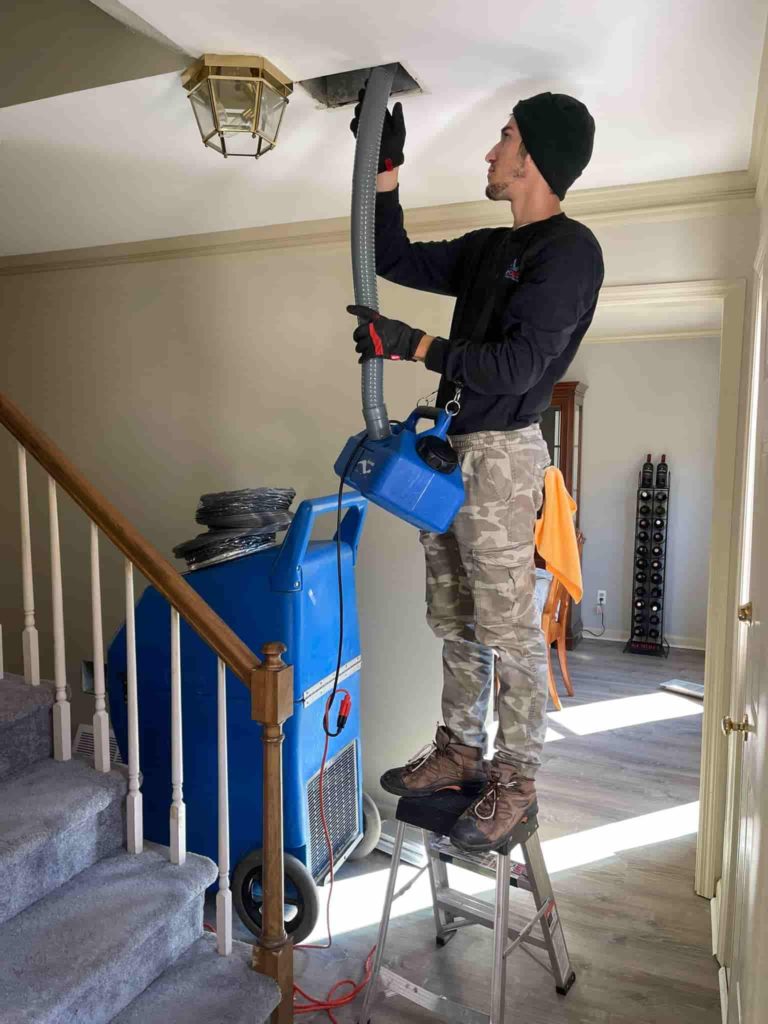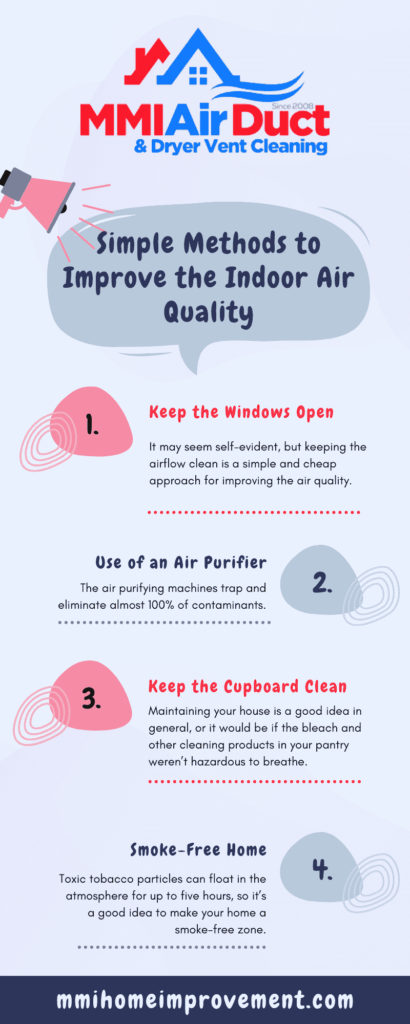When we think of air pollution, we think of energy plants and smoggy, congested cities, but some people realize that indoor air quality inside your house can be up to ten times worse than outside.
What is Poor Indoor Air Quality
Indoor pollution is worst in big cities because of higher amounts of outdoor pollution entering houses, but it also affects people living in rural areas. We can define indoor air pollution as dust, grime, or gasses in the air inside a structure that is harmful to us if we breathe them in. Many factors, including poor ventilation and chemicals found in cleaning products and paints. These factors can be the different causes of air pollution. It’s made up of small particles that can’t normally be seen or smelled, giving it the moniker ‘the invisible killer.’
We spend over ninety percent of our time indoors, inhaling dirty indoor air for over 150 hours every week. Furthermore, our homes are more protected and less ventilated than ever before. It lowers our electricity bills but lowers our indoor air quality since dry, stale air stays around for longer. Dryer vent cleaning in Marietta on time can be helpful for good air quality because the professionals remove all the lint in it.
Consequences of Indoor Air Pollution
The concept of air pollution in our houses is frightening, yet much of it is natural and inevitable. It only becomes a problem when it is not addressed seriously and allowed to build up.
Some people may not have any signs, but that doesn’t mean we shouldn’t all examine our behaviors at home. We should examine it particularly when it comes to cleaning, ventilation, and the use of aerosols.
Someone stated that while we have learned a lot about the bad indoor air quality that harms our health and the health of our children, we still know far too little about the air we breathe in our cars, houses, and other places.”
Air pollution is dangerous to all of us, but it is especially dangerous to children and adults with lung disease. You might feel a dry throat or a cough if you were breathing dirty air for days or weeks at a time. You may also experience shortness of breath, wheezing, or a runny or itchy nose.
We must take a more cautious approach to toxins in our homes, that items are labeled similarly to foods so we can make informed decisions. That attention is devoted to detecting indoor pollution and providing sufficient airflow.
According to the World Health Organization, indoor air pollution killed 4.3 million people globally in 2012. It includes people suffering from major respiratory and cardiovascular diseases like lung cancer and heart disease.
Simple Methods to Improve the Indoor Air Quality
Keep the Windows Open
It may seem self-evident, but keeping the airflow clean is a simple and cheap approach for improving the air quality.
When you’re trying to stay warm and save money on heating systems, opening the windows may seem contradictory. Still, it’s essential to allow oxygen in and toxins out and decrease the humidity that dust mites require to survive. When using chemical-heavy cleaning or decorating materials, be extra careful to keep the room ventilated. You should get HVAC cleaning in Marietta to get clean air from vents.
Use of an Air Purifier
Pollen and dust particles can be very small so cleaning something you can’t see is nearly impossible. By pulling in bad air, purifying it, and letting it back into the room much cleaner and fresher, the better air purifying machines trap and eliminate almost 100% of contaminants. Air purifiers are especially useful during the prime hay fever season. It runs from May to July, and most come with LED displays that show green when the air is pure.

Some emit negatively charged ions into the atmosphere to assist in neutralizing airborne bacteria or viruses. Search for air purifiers with a high clean air delivery rate. The greater the rate, the faster the air filtering machine will work.
If your budget allows, purchase an air purifier with a blower to spread clean air throughout the room. Air purifiers that are smaller and less expensive can still be effective, but you will have to shift them in larger spaces.
Keep the Cupboard Clean
Maintaining your house is a good idea in general, or it would be if the bleach and other cleaning products in your pantry weren’t hazardous to breathe. Furthermore, washing them down the sink pollutes the streams and harms wildlife.
To cut through oil and dirt, you don’t need to use dangerous chemicals because plenty of eco-friendly cleaning products works well.
Choose reusable microfiber rags that catch microscopic dirt particles when wet for thorough cleaning with only tap water. They also don’t hold bacteria so that they won’t cross-contaminate bathroom and kitchen surfaces.
Make Your Home Smoke-Free
Toxic tobacco particles can float in the atmosphere for up to five hours, so it’s a good idea to make your home a smoke-free zone. Remember that the candles, and anything else you burn for fun spread carbon monoxide and carbon dioxide.
Use the below code to Embed this infographic

